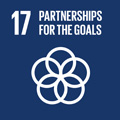- Docente: Federico Alberini
- Credits: 4
- SSD: ING-IND/25
- Language: Italian
- Teaching Mode: Traditional lectures
- Campus: Bologna
- Corso: First cycle degree programme (L) in Industrial Chemistry (cod. 8513)
-
from Feb 17, 2025 to Mar 31, 2025
Learning outcomes
The purpose of this course is to present and discuss the main technologies adopted for the manufacture of formulated chemical products. Tools for the understanding and the quantitative analysis of typical production plants will be provided. The student will be introduced to the most widely adopted formulation technologies and relevant equipment: miscible fluids mixing, dissolution of solids in liquids, mixing of solids, solid suspension and distribution, immiscible liquid-liquid mixing and emulsification, gas-liquid dispersion. Skills for a quantitative, though simplified, prediction of the equipment behaviour will be provided.
Course contents
Introduction to mixing technologies for the formulation industry
Dispersion of fine particles in liquid media;
-incorporation
-Wetting
-Breakdown of agglomerates and aggregates
-Stability of flocculation
Dynamics of emulsification
-Rheology
-droplet formation
-Implication for process design, batch vs continuous
Suspension of solids
-Definition of states of suspension
-Mechanism and models of particle suspension
-mass transfer with solid particles
Gas-Liquid dispersion and mixing
-classification of gas-liquid mixing
-bubble size and coalescence
-gas-liquid mass transfer
Scale up
-scale up in turbulent regime
- scale up in gas-liquid applications
- scale up in solid-liquid applications
Examples of applications in pharmaceutical, home and personal care industries, chemical/catalyst manufacture, food, will be discussed to contextualise the contents of the course.
Readings/Bibliography
N. Harnby, M. F. Edwards, A. W. Nienow Mixing in the process industries.
eBook ISBN: 9780080536583, Paperback ISBN: 9780750637602, Imprint: Butterworth-Heinemann
[Though warmly recommended to the students for widening their knowledge of the various topics, this book is not formally adopted as textbooks nor followed in a detailed way].
Teaching methods
The lessons and solution of exercises in class, according to the official timetable.
Assessment methods
The final examination is oral. The exam is aimed at assessing the understanding of the fundamental principles of the technologies included in the course program. Moreover, the capability to identify the most suitable operating mode of specific operations and to critically discuss major characteristics of the equipment working conditions and scale-up criteria will be verified.
Teaching tools
Video projector, blackboard.
Office hours
See the website of Federico Alberini
SDGs


This teaching activity contributes to the achievement of the Sustainable Development Goals of the UN 2030 Agenda.
